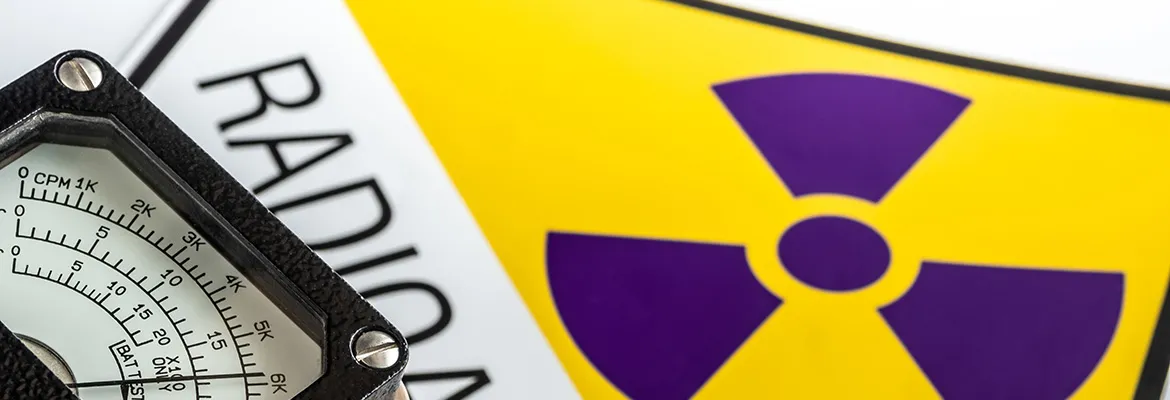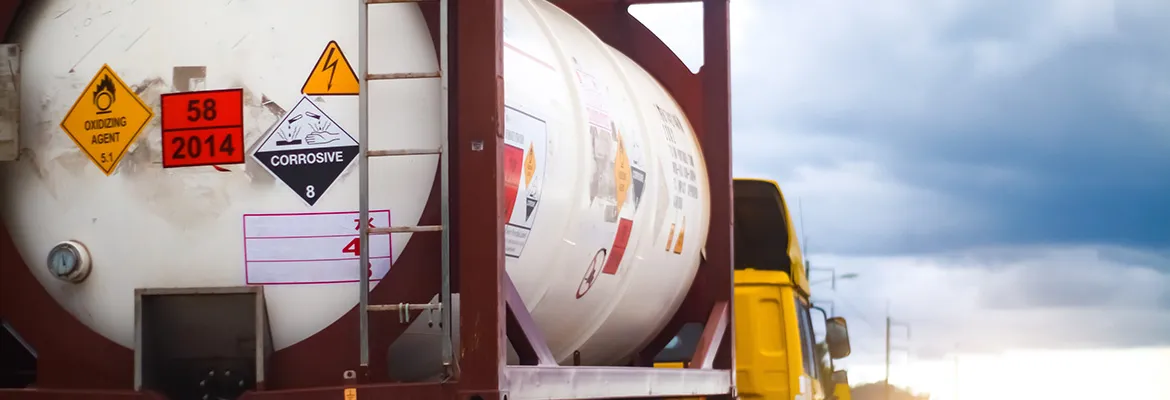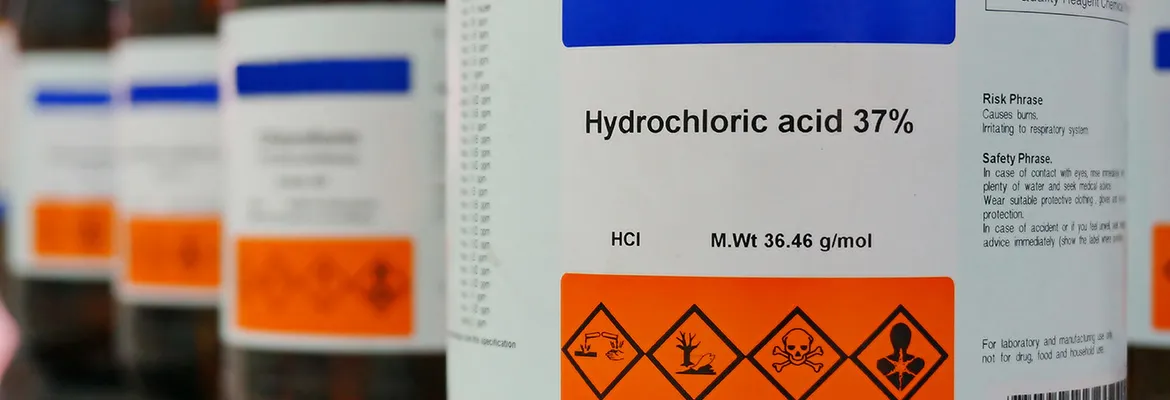
Hazardous substance labels: New rules for CLP and GHS labels
From drugstores to chemical laboratories, there are many companies that work with hazardous substances and mixtures. To ensure that all employees and customers are protected from potential risks, these hazardous substances must be labelled. Since 2015, the CLP Regulation has prescribed how this works.

Definition CLP and GHS: What is that?
GHS: Labelling of hazardous substances works in the same way worldwide
GHS stands for "Globally Harmonised System of Classification and Labelling of Chemicals". It is a globally uniform system for regulating the classification and labelling of hazardous substances and mixtures. Since 2008, the labelling rules have been introduced gradually. Until 2015, many EU states had their own directives, which were repealed that year with the introduction of the CLP Regulation. Since then, only this regulation has applied to implement the GHS in all member states. Its directives and all associated amendments are legally binding in the European Union and must be followed by all industries.
The Ordinance on the Labelling and Packaging of Hazardous Substances
The CLP Regulation (Regulation No. 1272/2008) is the direct implementation of the GHS in the European Union. It provides guidelines for the classification, hazard labelling and packaging of hazardous substances. This is intended to guarantee more comprehensive protection for human health and the environment. It is also intended to contribute to competitiveness, innovation and the free movement of chemical substances and mixtures. In addition to labelling elements such as pictograms and standard texts for GHS stickers, the guidelines also prescribe packaging standards for the different types of hazardous substances. In addition, they instruct importers and downstream users to forward information on physically and health hazardous mixtures to the respective competent authorities of the state.
UFI: Unique recipe identifier is mandatory since 2017
In 2017, further changes were made to EU Regulation 2017/542. Since then, all GHS labels must also contain the UFI (Unique Formula Identifier). This is a sixteen-digit code consisting of letters and numbers that identifies the specific hazardous substance. It facilitates communication with poison control centres, which can provide rapid information on trade name, composition, colour and toxicology when the UFI code is given. The formulation identifier must be printed after the marking "UFI:" on hazardous substance labels or inner packaging or primary packaging. A legible and machine-coded print form is obligatory here.

What do regulation-compliant hazardous substance labels look like?
Pictograms and UFI are mandatory on all packaging
The most important mandatory information on hazardous substance labels are the CLP pictograms and the unique formulation identifier (UFI). The hazard pictograms can help responders in emergency situations to make an initial assessment of possible hazards. This enables them to select the appropriate safety equipment and initiate sensible countermeasures. The recipe identifier, on the other hand, is important for communication with the poison control centre. If emergency workers give the identifier to the centre, they receive concrete information on potential risks and on the measures, they should take to provide first aid and contain the hazards.
Checklist: These are the things that hazardous substance labels must contain
Article 17 of the CLP Regulation provides information on what information hazardous substance labels must contain. According to the article, the following information is important for GHS labels:
This applies, for example, to foodstuffs, which must be labelled according to an EU-wide standard. The EU's Food Information Regulation stipulates as mandatory information, among other things:
- a signal word ("Danger" or "Caution"),
- hazard statements, also referred to as H-phrases,
- safety instructions, also known as P-phrases (precautionary statements), relating, for example, to the prevention and countermeasures of hazards and the storage and disposal of the product.
In addition, it is mandatory to write hazardous substance labels in the language of the state in which the product is circulated.
What pictograms are there?
Hazard pictograms inform consumers of the specific hazards posed by a product. They are a black symbol on a white background surrounded by a red diamond. According to the CLP Regulation, there are nine possible pictograms for hazardous substance labels:
- GHS01/Explosive: Picture of an exploding bomb,
- GHS02/Flammable: Picture of a flame,
- GHS03/Oxidising: Picture of a flame over a circle,
- GHS04/(Compressed) gases: Picture of a gas cylinder,
- GHS05/Corrosive: Picture of two test tubes above the ground and a hand,
- GHS06/toxic: picture of a skull with crossed bones,
- GHS07/Hazards to health: exclamation mark,
- GHS08/Health hazard: Picture of a human silhouette with cracks,
- GHS09/Environmental hazard: Picture of a dead tree and a dead fish.
These packaging's are affected by the directives
Transport and consolidation packaging are not affected
The CLP Regulation applies to all outer, inner and intermediate packaging that is necessary for the direct use of a product or prepares it for such use. GHS labels are mandatory here. Additional packaging that is necessary, for example, to protect the goods during transport via consolidation is not affected by the regulation. This means: The direct outer packaging or secondary packaging of a battery must be labelled with dangerous goods labels, as it constitutes dangerous goods. However, a cardboard box in which several battery packs are transported from the place of manufacture to the place of sale is considered protective and consolidation packaging. It is therefore not subject to the regulations of the CLP Regulation and does not require a GHS label.
What the packaging industry should do now
As not all printed packaging is affected by the new directives, the packaging industry is not under pressure to change any processes. Nevertheless, it is necessary to take a closer look at the new regulations. If your company is active in the packaging industry, you are obliged by the CLP Regulation to establish a sufficient flow of information with your customers by means of hazardous substance labels. Therefore, find out in good time whether and to what extent the packaging you provide is affected by the new directives.

By when do the regulations have to be implemented?
The new deadline for labelling is 01.01.2025
Originally, importers and downstream users were given until the beginning of 2020 to implement their new obligations. However, this deadline turned out to be impractical. For this reason, the EU Commission postponed the first deadline to the first of January 2021. However, this only affected new mixtures that had not yet been registered by that time. For all mixtures that have already been notified under current national law, the deadline is the first of January 2025. On this date, the new hazardous substance labels and all associated directives will become mandatory.
Some notifications must already be made before 2025
In some cases, it may be necessary to notify before the end of the current transitional phase. This is always the case if a mixture or a component of the mixture changes in its composition or classification or in relation to the toxicological characteristics. Such changes, as well as new brand names, must be notified by the holder to the competent body.
Old containers may be used up
Substances have already had to be labelled according to the CLP Regulation since 2010. For mixtures, this regulation has applied since 2015. However, containers from before 2010 or 2015 do not have to be disposed of: They may be used up in companies, even if they have outdated hazardous substance labels. Important: The operating instructions must be adapted as soon as containers with the new, legally compliant GHS label are procured.




